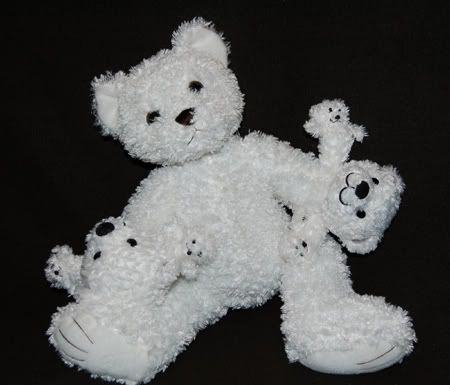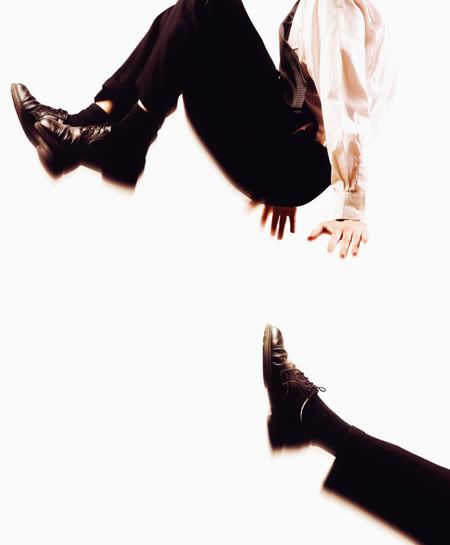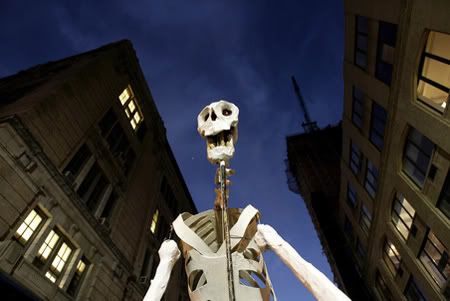Realistic Fractals by Rich Jarzombek

Senorita's New Attire by Rich Jarzombek. Click for larger image.
The general field of Fractal Art abounds in pictures that may be largely described as beautiful random designs or geometric shapes. It is rare to find Fractal Art pictures that strongly portray substantive images such as people or specific objects. However, it is the intent of Realistic Fractals to restrict itself solely to the creation of such substantive images.
(from http://realisticfractals.com/introduction.html)

Arab Granny and Child by Rich Jarzombek. Click for larger image.
Each Realistic Fractal picture was created by its own single mathematical expression. No overlays of multiple fractal pictures are used. Most of the pictures are shown in the 'as is' condition directly from the fractal generating software. In some cases, selected areas of the fractal pictures may be slightly 'enhanced' using other software in order to permit easier visual interpretaion. However, in these cases, the original basic fractal image is left unchanged.
(from http://realisticfractals.com/introduction.html)

Near East Prelate by Rich Jarzombek. Click for larger image.
Realistic Fractals consists of Art Galleries created with Fractal Art pictures which have a strong visual relationship to each picture's title. These pictures are sorted into three types of galleries: People Gallery, Objects Gallery and Religious Gallery.
(from http://realisticfractals.com/index.html)

Bishop's Invocation by Rich Jarzombek. Click for larger image.
Rich Jarzombek says:
At present my fractal art interests are in creating equations which, when inserted into Tierazon, have a 'relatively high probability' of generating images that are easily perceived as 'real people' or 'real objects'. I do appreciate and respect traditional fractal art forms. From the standpoint of 'artistic beauty' they far surpass my crude images. Hopefully, I simply am attempting to show that there may exist a new (?) potential in 'fractal art' for the benefit of viewers who might prefer more 'realistic' images.
In mid 2007 I designed my own website, Realistic Fractals, which I've sorted into People, Objects, and Religious galleries. Each of my fractals is based on its own unique mathematical expression that I created and inserted into Tierazon. In some cases I 'color enhance' selected areas of the fractals for easier interpretation while leaving the original underlying single fractal image unchanged. No overlay of multiple fractals, photos, nor other artwork are used.

Bee Keeper by Rich Jarzombek. Click for larger image.
(Bee Keeper? Or grizzled old salt decked out in a Sou' Wester?)
Who is this Rich Jarzombek? Is he the latest young new face at Renderosity or Deviant Art?
Oh, no. He's a self-proclaimed "Old Geezer", 80-something, retired Chemical Engineer and a Grandfather too. He claims to have no formal art training, but that's pretty normal in the Fractal Art world.
Rich, I suspect, is just another one of us folks who've discovered something exciting about fractals and pursued it with a passion that comes from imagery itself, plain and simple. However, he's headed off on a unique path because that's what happens when you don't hang around the losers and back-slappers that cling to the virtual walls of the Cloning Facility at Renderosity and Deviant Art, oozing useless tips and dripping with venom. That's right.

Parting of the Red Sea by Rich Jarzombek. Click for larger image.
I haven't made any images quite like this in Tierazon myself. But one thing I've learned about fractal programs is that they're very similar to musical instruments in the sense that they can be made to produce things that the author of the program may never have anticipated.
It just goes to show that you're never too old to do something new. And sadly, for all those youngsters at Renderosity and Deviant Art, caught in that fractal House of the Rising Sun, wearing that "ball and chain" it shows you're never too young to become old and stuck in your ways. Ain't that the truth...








